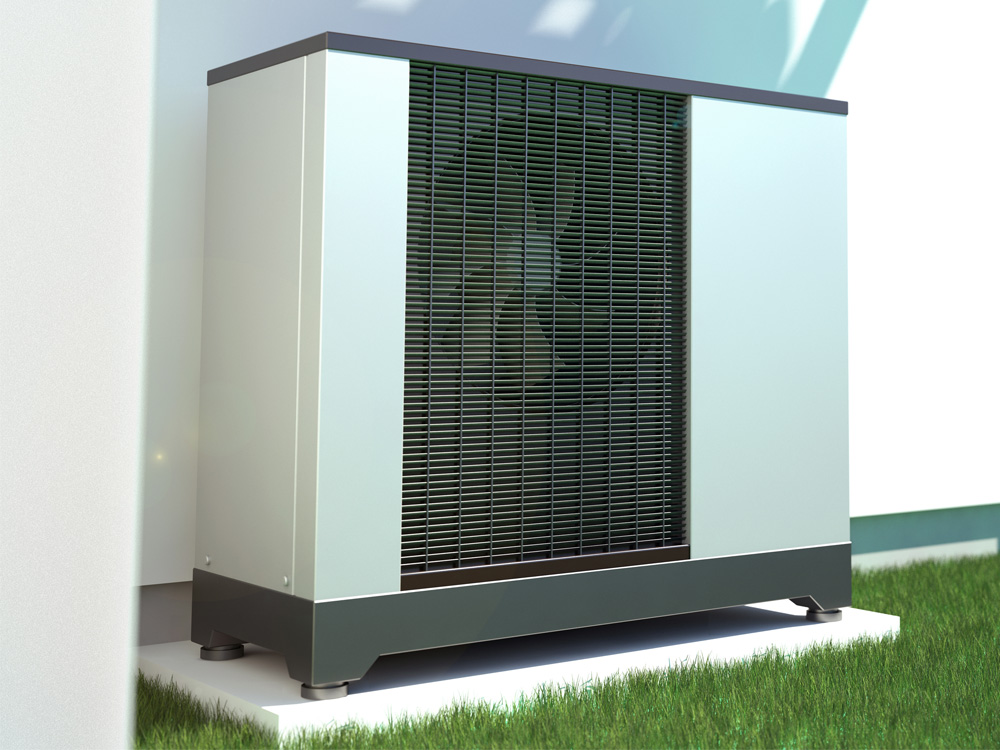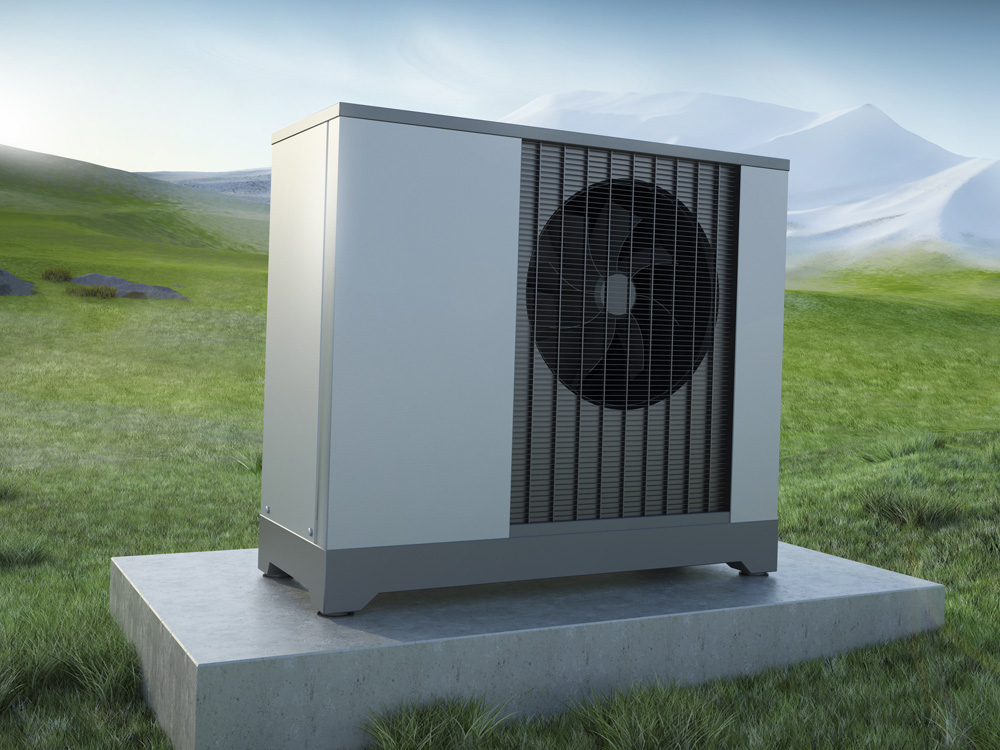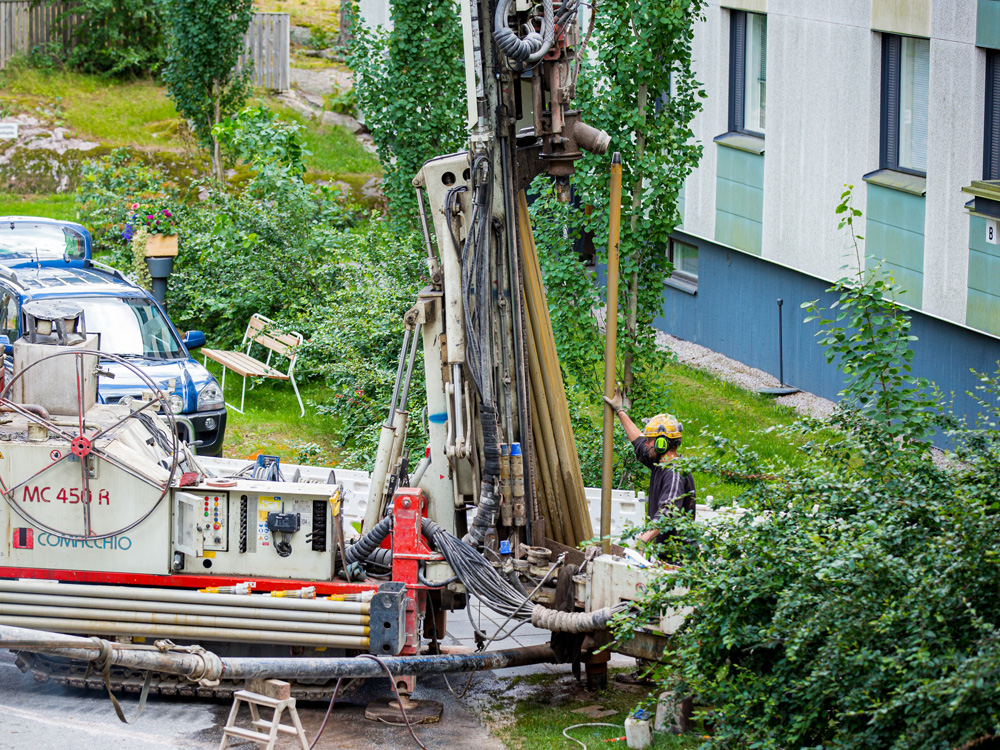Trusted since 1963
Welcome to the PH Jones
introduction to heat pumps

The Principal of Heat Pumps
Heat pumps come in various different forms, but the principle of all heat pumps is the same – to capture heat from a source using an evaporate/refrigerant. This is a liquid with an extremely low boiling temperature, so it does not take a large amount of heat to make a dramatic difference and it is then compressed to generate even more heat before being fed into the property’s heating system. Some units have the ability to reverse this cycle, providing cooling in addition to heat.
The efficiency of these units is typically at least 300%, so if you were to put 1kw of electricity in, you would get 3kw out. On top of this, as the unit does not use combustion it has zero emissions, making them a great choice for areas where air quality is a concern. Heat pumps run on electricity, meaning that they can easily be supplemented with microgeneration to make them even more cost effective to run. Some units can even link in with demand-response systems, which reduces running costs even further whilst supporting the grid.

Heating & Cooling Delivery
There are two types of delivery into the home – air and water – and both follow the same principle, with the key difference being how the property receives its heating or cooling. The pump units are slightly different with air, using a split block external unit where the refrigerant is connected directly to the internal unit. Water typically uses a Monoblock system where the refrigerant is contained within the unit and the connections to the system contain a water/antifreeze mix.
Air utilises fan units at high level in each room, blowing heated, or in some cases cooled air, into the room. These units can come with filters which reduce dust and pollutants in the air, or sensors to increase or decrease the power output which react directly to the amount of movement in the room.
Water works in much the same way as a traditional gas fired boiler, connecting to the system using water. However, if the heat pump is located outside, a plate heat exchanger will be required to separate the water, containing antifreeze from the main system. Radiators are typically used, although fanned convectors can be specified if a unit capable of cooling is selected. Water is usually more popular within social housing and retrofit as it is a simpler system.

Air Source
These are designed to capture the ambient heat from the air outside the property, with the use of a fan and heat exchanger. This design is the most popular in the UK due to its lower install costs and simplicity to fit. Often all that is required to replace an existing fossil fuel boiler is the installation of the pump, buffer and upgrade of some radiators.
The advantage of these units is that the main unit is located outside of the property, maximising available space inside.

Hybrid
Hybrid heat pumps are a mixture of a heat pump and a second heat source, usually a modern gas boiler. The heat pump follows all the same characteristics of a Monoblock air source heat pump, but links into a wider system. The key with these types of systems are the controls, as these will automatically switch between the heat pump and other appliances to ensure the most efficient and cost-effective solution is selected.
The advantage of these systems is that they can run at much higher temperatures when needed. By either switching to the other heat source or running the two together, this removes the need to install larger emitters. The disadvantage of this system is you end up with two heating appliances, requiring more space with a higher initial purchase cost. These systems can be installed in the conventional set up with hot water storage or connect to a combi boiler, although in this configuration the heat pump would only supply the heating, not the hot water.

Hydro
Water is the heat source for these units and can be captured in two ways.
Open loop draws the water from the water source into the heat pump and through its plate heat exchanger, capturing its heat before returning it to the water source. The advantage of this method is that they are easier to install but the risk of blockage needs mitigating.
Closed loop systems are sealed, pumping a glycol mix through a circuit submerged in the water source, picking up the heat from the body of water and returning it to the unit. The advantage of these systems is they mitigate the risk of blockages from the water source, but they come with a risk of the loop leaking and contaminating the water source.
Both systems connect to the pump where it can deliver the energy into the home through either the air or water delivery system.

Ground Source
Ground source heat pumps work in the same way as other heat pumps but capture their heat from the ground. One of the advantages of this type of system is that it is quieter outside the property compared to an air source heat pump, due to not requiring a fan. They come in various sizes and can be as compact as a combi boiler, including being wall mountable.
There are several ways to connect these units to the ground with the three primary methods being:
Horizontal ground loop: Where a loop is laid under the ground close to the surface. This type of loop requires a big section of land to install with a lot of disturbance to the ground required. This is a popular option for new build houses as it removes the need for bore holes.
Vertical ground loop: These are drilled straight down into the ground in a bore hole. These take up minimal floor area as the surface area for the loop is achieved through depth. The drilling of bore holes for ground loops is a specialist job with depths exceeding 100 meters. This is a lot more costly to install than a horizontal loop but causes less disruption and requires less space.
Shared ground arrays: These are ideal for multiple heat pump installs where the ground array is shared between properties. The array is specified based on the total power required by all properties connecting onto it. All the loops are connected by a shared manifold for each individual heat pump to connect onto. This is a popular solution with apartment buildings etc. and benefits from economies of scale.
If you would like to know more please do not hesitate to contact the team; customerstrategy@phjones.com